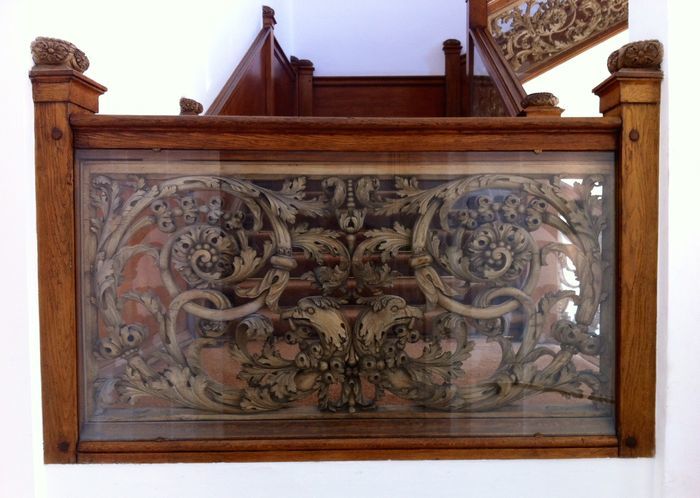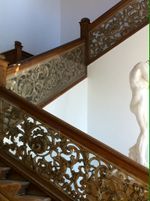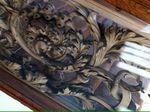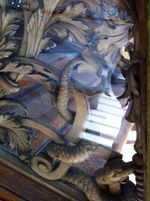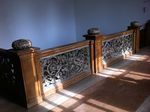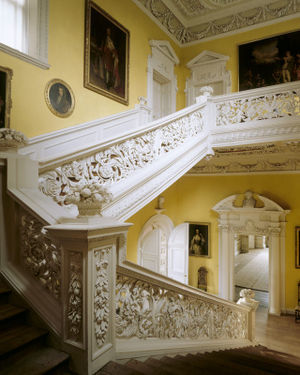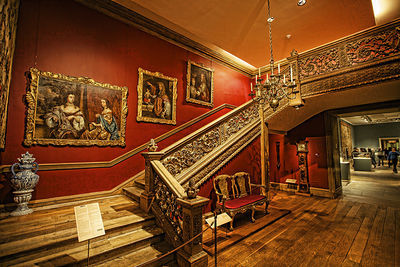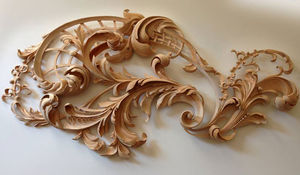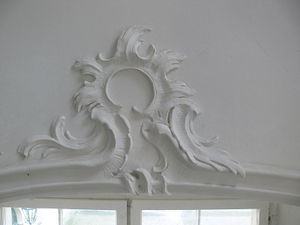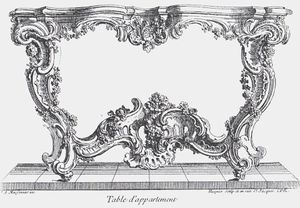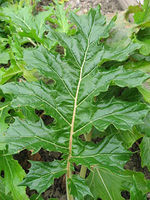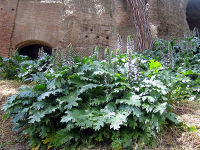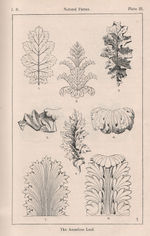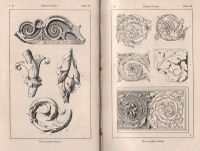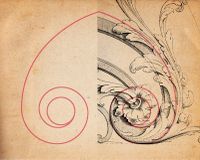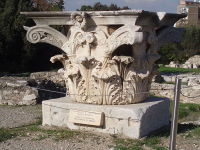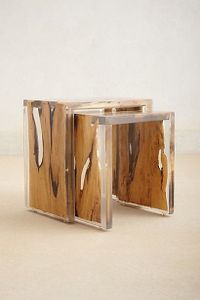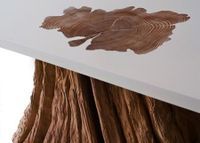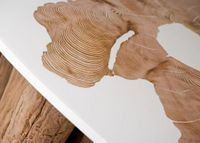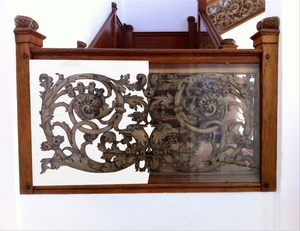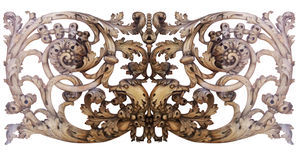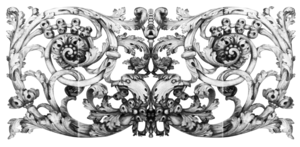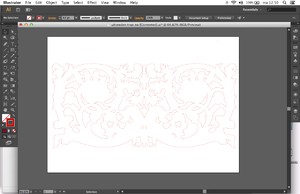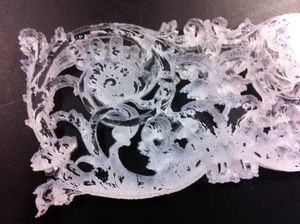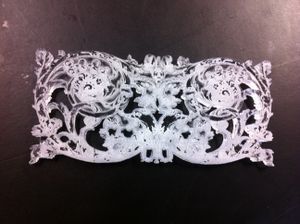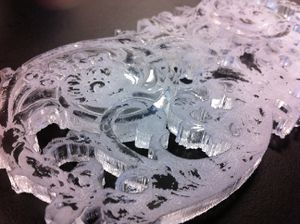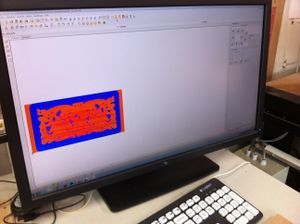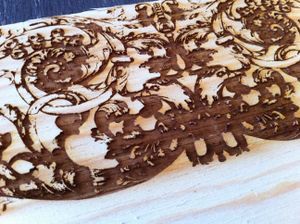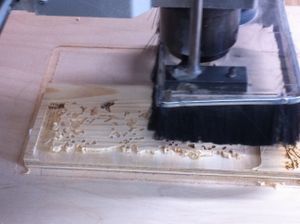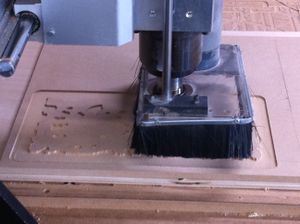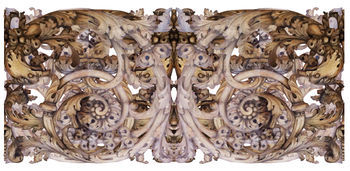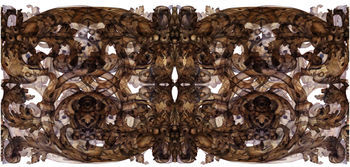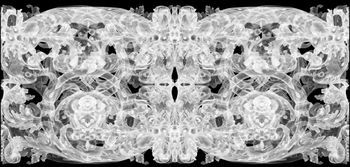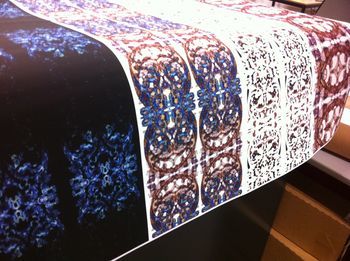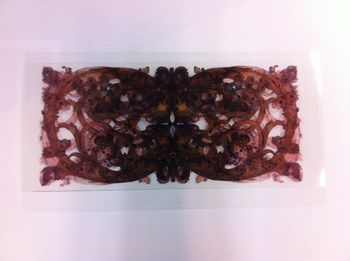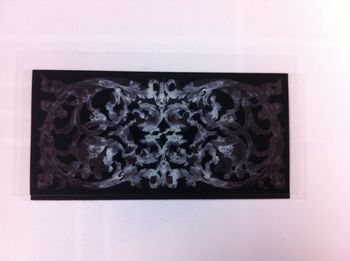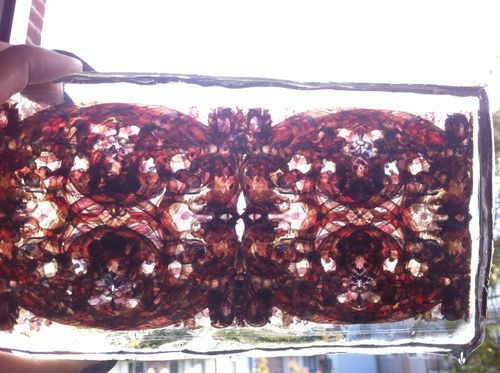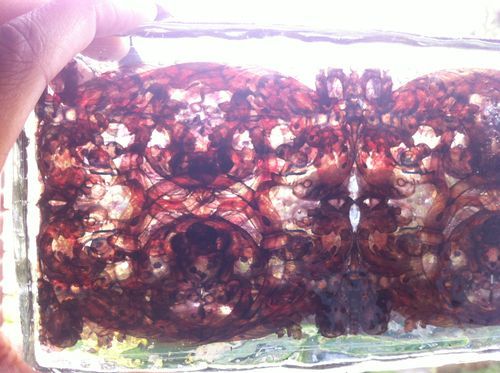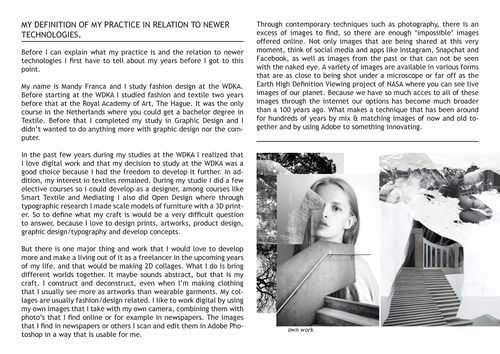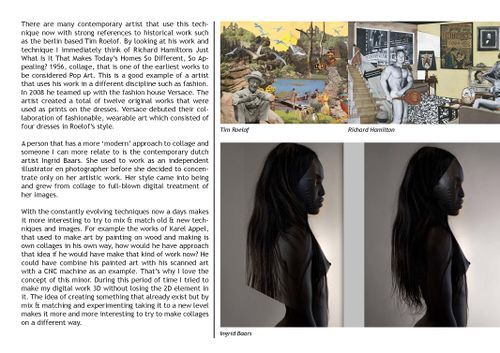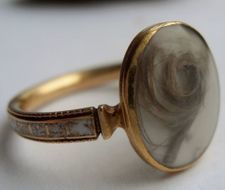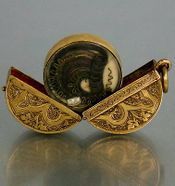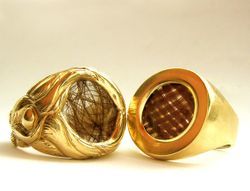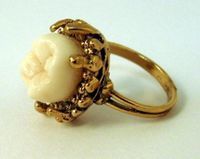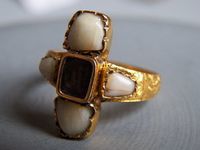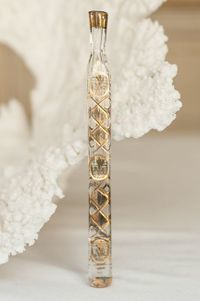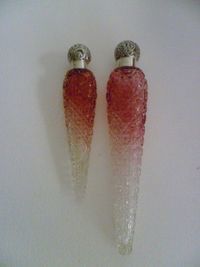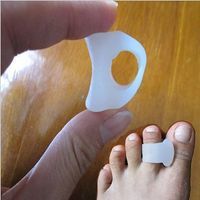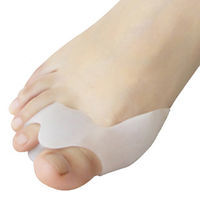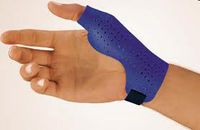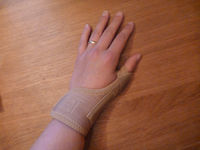User:Mandy.franca
Fantastic Forgeries
I chose the stairs in the Boijmans museum. It fascinated me that the object was placed behind glass what suggest that is it valuable and fragile. On the website of the boijmans van Beuningen museum is stated that it is probably made in 1700 and in the museum it self in 1660 so that raised some questions for me if the museum does not even have the correct dates.
Staircase of a house on the Vijverberg in The Hague,'1700?' Sculptor: Willem van Sundert (Den Haag 1656 - Den Haag 1747) Client: Simon de Brienne (Jouy le Châtel - Den Haag 1707) Material and technology: linden- en eikenhout Object type: trap Dimensio)
Research
About the Piece
The staircase in the Museum Boijmans van Beuningen consist of three flights, joined by two quarter landings. It has a continuous carved balustrade made up of nine panels, four sloping and five horizontal, of flowing acanthus scrolls. Each panel was designed from the middle axe. The decoration consists of stylized animals heads transforming into elaborate acanthus scrolls. The composition of horizontal panels is strictly symmetrical.
Three panels, one at the first landing and two on the first floor, have two eagles’ heads, facing away from each other, holding a garland in their beaks. The two panels on the first floor are alternated with two longer ones of analogical composition but with dolphins instead of eagles. From their mouth flow out thick scrolls suggesting water. The sloping panels are symmetrical in general composition but not in details. The incorporate handwork next to two eagles’ heads and acanthus. Two panels have flat handwork and are enriched by snakes at the sides. The other two have profiled handwork and no snakes. The finals of the first floor differ from those situated on the landings and flights of stair. The former are much bigger and decorated with acanthus leaves an pea-pod, whereas the latter have simple rosettes at the top and the sides.
New light on a old staircase by Ada Elzbieta Grochowska
Comparable Staircases
Rococo
Rococo, less commonly roccoco, or "Late Baroque", is an 18th-century artistic movement and style, affecting many aspects of the arts including painting, sculpture, architecture, interior design, decoration, literature, music, and theatre. It developed in the early 18th century in Paris, France as a reaction against the grandeur, symmetry, and strict regulations of the Baroque, especially of the Palace of Versailles. Rococo artists and architects used a more jocular, florid, and graceful approach to the Baroque. Their style was ornate and used light colours, asymmetrical designs, curves, and gold. Unlike the political Baroque, the Rococo had playful and witty themes. The interior decoration of Rococo rooms was designed as a total work of art with elegant and ornate furniture, small sculptures, ornamental mirrors, and tapestry complementing architecture, reliefs, and wall paintings. The Rococo was also important in theatre. The book The Rococo states that no other culture "has produced a wittier, more elegant, and teasing dialogue full of elusive and camouflaging language and gestures, refined feelings and subtle criticism" than Rococo theatre, especially that of France. The word is seen as a combination of the French rocaille (stone) and coquilles (shell), due to reliance on these objects as decorative motifs.[3] The term may also be a combination of the Italian word "barocco" (an irregularly shaped pearl, possibly the source of the word "baroque") and the French "rocaille" (a popular form of garden or interior ornamentation using shells and pebbles) and may describe the refined and fanciful style that became fashionable in parts of Europe in the 18th century.[4] Owing to Rococo love of shell-like curves and focus on decorative arts, some critics used the term to derogatively imply that the style was frivolous or merely modish. When the term was first used in English in about 1836, it was a colloquialism meaning "old-fashioned".
Rococo Examples
Acanthus (plant)
Several species, especially A. balcanicus, A. spinosus and A. mollis, are grown as ornamental plants. Acanthus leaves were the aesthetic basis for Corinthian capitals; see acanthus (ornament).
Acanthus (ornament)
The acanthus is one of the most common plant forms to make foliage ornament and decoration. In architecture, an ornament is carved into stone or wood to resemble leaves from the Mediterranean species of the Acanthus genus of plants, which have deeply cut leaves with some similarity to those of the thistle and poppy. Both Acanthus mollis and the still more deeply cut Acanthus spinosus have been claimed as the main model, and particular examples of the motif may be closer in form to one or the other species; the leaves of both are in any case, rather variable in form. The motif is found in decoration in nearly every medium.
Contemporary wood objects
During Class
Why i thinks this work is interesting:
- The maker could show how good he was at his craft
- It is made by hand
- The work is so special that it's placed behind glass
- Natural
- Vulnerable
Suggested Techniques:
- 3D printen, soldering
- frezen
- kleien
- hout snijden
- keramiek
- vlechten
- hologram
Context:
- vroeger gebruikt als ornament nu gemaakt voor kinderen als speelgoed
- gegoten gangen stelsel van mythologische wezen
Associatie:
- aquarium
- poort/deur
- piramide
- trap rocky balboa
- spaanse trappen
- de zeven hemelen
Replica
Interpretation
Diorama in resin
Written Assignment
Tools of the Trade
Concept omschrijving
Waarom raken mensen gehecht aan objecten? Mensen raken gehecht aan objecten, denk maar aan een strand wandeling, je ziet een mooie schelp, neemt het mee niet alleen omdat je het mooi vind maar als je het ziet denk je aan dat mooie moment. Het gaat dus niet zo zeer om het object maar om de herinnering die achter blijft. Het object krijgt dus een emotionele waarde. Ik ben daarom onderzoek gaan doen naar waarom? the Biology of Attachment [1].
- biology of attachment
- attachment in adults
- psychoanalysis
Ik groeide op met familie die aan de andere kant van de wereld woont wat een indruk in mijn leven achter heb gelaten en mijn relaties later in mijn leven vormde. Een goed voorbeeld is het verhaal en de relatie tussen mij en mijn opa. Ik heb hem letterlijk 3 keer gezien, hij zei geen woord, ik kende hem niet maar voelde me erg verbonden door het idee dat ik uit hem voor kom. Toen hij overleed heeft mijn vader een stukje van zijn haar voor mij bewaard…..
Ik heb meer dan 6 jaar lang een relatie gehad met een man die soms in totaal 6 maanden in het jaar in het buitenland zat. Je hebt een emotionele band met iemand die je niet vaak ziet.. Ik heb toen een sieraad gemaakt. Twee ringen met haar van ons beide in giethars gegoten als prototype voor een rouwsieraad van mijn opa..
De ring werd op een gegeven moment mijn op maat gemaakte/persoonlijke 'talisman'. Het werd een 'tool’ dat ik bij mij droeg waar ik een emotionele band mee heb, het werd een psychische ondersteuning en een (positieve) herinnering van een persoon en gevoel die ik bij me droeg. het maakt het object persoonlijk op een bijna egoïstische manier omdat je het bij je draagt voor je eigen gemoed stand.
Het gaat mij niet om het stukje DNA, niet om de code, maar om het menselijke.
Onderzoek
Kern woorden die voorkomen in de omschrijving:
- Emotionele band
- Moment
- Herinnering
- Emotionele waarde
- Psychische ondersteuning
- (Object) egoïstisch op een persoonlijke manier
- Menselijk
- 'Een stukje van de persoon bewaren'
Woorden die ik associeer met 'bij je dragen & preserveren'
BIJ JE DRAGEN:
- Zak
- Organen
- Urine - Vloeistof
- Bloed
- Bloedvaten
- Hol -Gevuld
- Holle dingen
preserveren (ww): 1) Bewaren 2) Beveiligen 3) Behoeden
PRESERVEREN:
- Tijd
- Houdbaarheid
- Intact
- Koelen
- Buisjes
- DNA
- DNA bewaren voor later
- Pekelen
talisman:[zelfstandig naamwoord]• voorwerp dat je beschermt tegen ongeluk
OBJECT - Een object is elk ding dat zich aan de menselijke zintuigen voordoet, of het is een zaak, proces of persoon waarover men aan het spreken of denken is. Objecten kunnen zowel werkelijk bestaand als denkbeeldig zijn.
VOORWERP - Een voorwerp is een tastbaar en handelbaar levenloos object. Het kan elk ding zijn dat zich aan de menselijke zintuigen voordoet.
Een object is dus altijd iets wat geen leven bevat en in dat opzicht geen waarde heeft. Het krijgt pas waarde na dat de 'eigenaar' er emotionele waarde aan toevoegt. De context moet daar door veranderd worden. Dat veranderd door de persoonlijke belevenis, gevoel en omgeving waar het object is gevonden of ontwikkelt is. Dat zorgt voor een verbintenis (gevoel) tussen de persoon en 'zijn of haar' object. (Subjectief)
PERSOON - Behalve als een ontwikkeld biologisch systeem wordt de mens door velen ook beschouwd als een wezen met een 'geestelijk leven'. De mens heeft zeer goed ontwikkelde hersenen, waarmee hij in staat is tot abstract nadenken, taal, introspectie, probleemoplossing en emotie.
persoon (zn): eenling, enkeling, individu, mens, particulier, persoonlijkheid, sterveling,wezen, ziel
Wat maakt een persoon?
- Emoties [2] & Gevoel [3]
- Identiteit -Culturele achtergrond -Opvoeding [4]
- Ziel [5]
- Uiterlijke kenmerken
- Karakter
- Gedachtes
- Leeft
- Ademt
Voorbeelden
Objecten die menselijke 'resten' bevatten
mourning jewelry
Haar
Tanden & Haar
=Tranen
mourning jewelry
Braces
Brainwave sensor: http://thecreatorsproject.vice.com/blog/artist-manipulates-48-pools-of-water-with-her-mind?utm_source=tcpfbus
http://www.nsmbl.nl/cute-of-overbodig-deze-armband-laat-je-weten-of-je-liefje-aan-je-denkt
http://greatist.com/happiness/bond-bracelets-for-long-distance-relationships-110113
http://news.nationalgeographic.com/news/2014/11/141116-dna-human-history-genealogy-eugenics-health-science-ngbooktalk/?utm_source=Facebook&utm_medium=Social&utm_content=link_fb20141116news-dnabooktalk&utm_campaign=Content&sf5805396=1 http://anonhq.com/dna-stored-cloud/
http://en.wikipedia.org/wiki/Attachment_theory
http://en.wikipedia.org/wiki/Attachment_theory#Biology_of_attachment
http://en.wikipedia.org/wiki/Attachment_theory#Psychoanalysis
http://en.wikipedia.org/wiki/Attachment_theory#Attachment_in_adults
